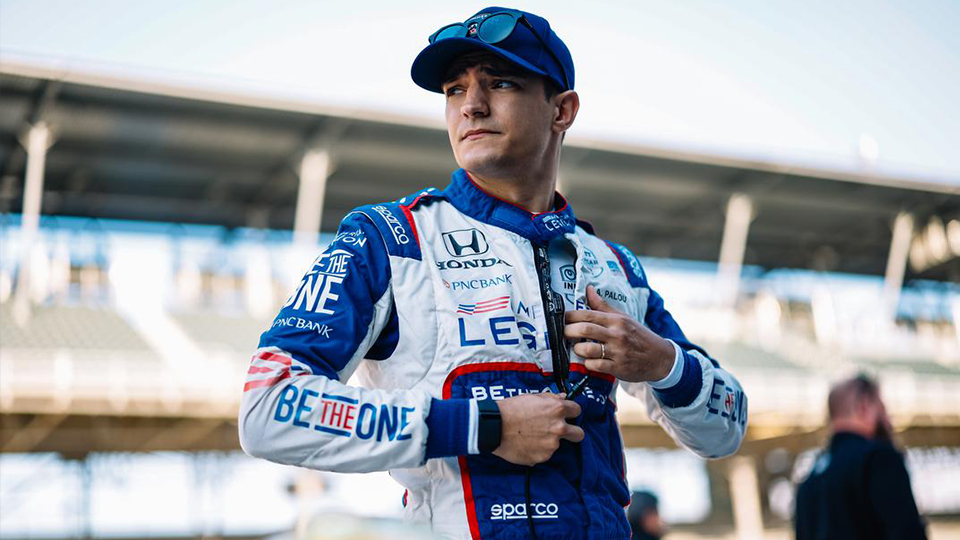IndyCar takes hybrid testing to its marquee venue in Indianapolis
Subscriber Benefit
As a subscriber you can listen to articles at work, in the car, or while you work out. Subscribe Now
The Indianapolis Motor Speedway reverted to its original purpose Thursday — serving as a test track for new automobile technology.
The lessons learned about IndyCar’s new hybrid cars could reverberate throughout next season.
Four drivers, including reigning series champ Alex Palou, spent Thursday turning laps on the 2.5-mile Brickyard in race cars equipped with paddles or buttons used to store or deploy extra energy while cars are on the track.
The early reviews were mixed.
“It’s certainly not fast,” 2016 Indianapolis 500 winner Alexander Rossi said. “Right now, it’s just a lot of experimenting and playing around with different kinds of theories. I think you’ll see more of an impact in group running than when you’re just driving around flat out by yourself.”
Although the Arrow McLaren driver spent his final two Formula One seasons, 2014 and 2015, driving in the series’ then newly adopted hybrids, these cars are not the same. Instead, they are unique to the series.
While the new parts fit between the engine and gearbox of these rear-powered cars, the hybrid concept acts similarly to the push-to-pass component IndyCar drivers have been using previously.
The biggest differences: Extra weight, less speed and more work in the cockpit.
Two-time series champ Will Power, the 2018 Indy winner, also tested the cars at Sebring and understands it as well as anyone who has been in the four cars that have tested now at five different venues. But he, like everyone else, is still trying to figure out how to make the car function best.
“I haven’t run in traffic yet. That’s where it really matters,” Power said. “I can’t see there will be any issues. It’s pretty straightforward. You pull the paddle, it regenerates (energy); you press the button, it deploys (energy). But it’s one more tool that you have to manage in the cockpit. I have to say, like in (500) qualifications, you’re going to be pretty busy on that first lap.”
It’s not just the testing that remains a work in progress.
Manufacturers have so far only had four cars available for testing. They are hoping to add six more — one for each IndyCar team — before another test is held in December.
That’s not all. Series officials are still debating new guidelines that would apply to technology never before used in the series. Drivers even seem unclear on whether the systems could be deployed on road and street courses, where there are many more turns and braking areas.
“When I left Barber, I think we were at the stage where we were trying to do automatic everything, manual everything, automatic deployment and manual regions,” Palou said. “So I think we’re experimenting with the formula that works best.”
There are other questions, too, such as reliability — especially under the long and usually hot race-day conditions for Indianapolis’ fastest race. IndyCar President Jay Frye said engineers from Chevrolet and Honda, the series’ two engine manufacturers, have been collaborating on what he expects will be a spec part on the cars.
But with no ovals on the schedule until the 500 on May 26, it may not be possible to know how the hybrid car will hold up in the biggest and longest IndyCar race, especially if the race-day temperatures continue to be unseasonably hot.
“I think we’re just interested in getting involved in different sustainable technologies out there and then allowing our engineers to develop them and work on them,” Honda Hybrid project leader Matt Niles said. “And then to come here, you know, to this sort of extreme environment and test them in a race and then see how that plays out in the future.”
It could mean Indy fans will see different strategies introduced.
“If you’re leading, you cannot regen. If you regen, you’re going to get passed,” Palou said. “If you’re second, you can regen a bit but not a lot so the third (car) does not overtake you. The third you can regen aggressively and hopefully deploy aggressively as well and overtake from third to second and then have more movement, which is what we want I think.”
Eventually, Power believes, the speed will come, too. Just not by May.
“Not this year, not next year,” Power said. “It’s got more capability. But I think reliability is going to come first, and then we can creep up on the amount of power we use in the deploy.”
